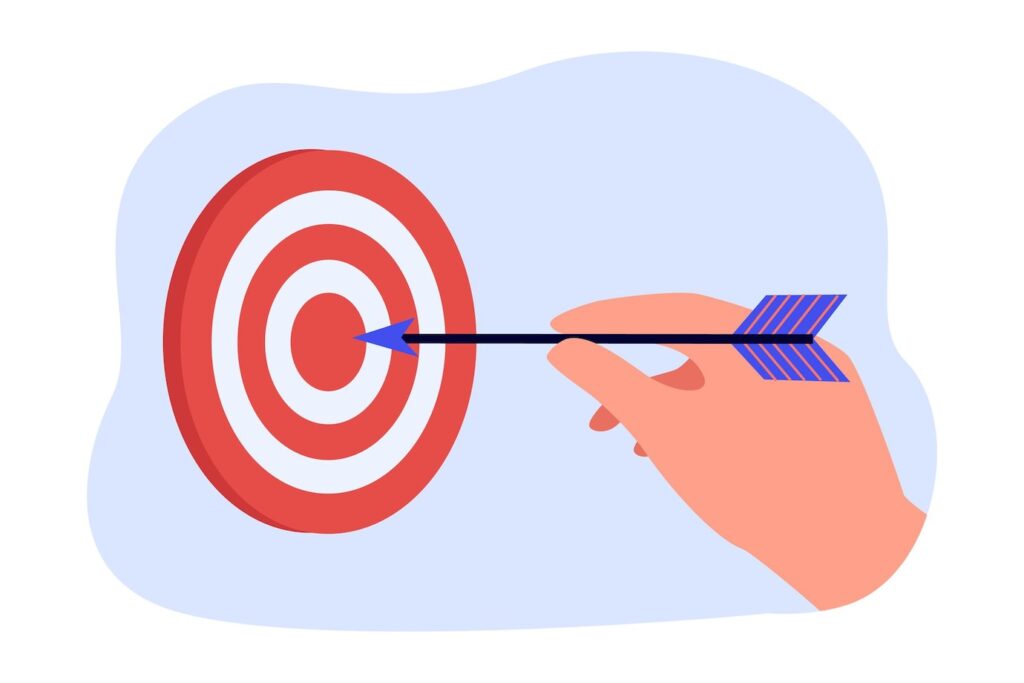UX is not just a fancy concept, a popular term, or a modern-day sphere to be in. The UX (user experience) presence is inseparable from any created product. A top product still doesn’t suffice for satisfaction. What matters is the experience it gives to the end users.
Experience is why you and your team design the product for a user – to have the experience. The experience is about interaction. For instance, we interact with the remote control when using the air conditioning system. Its design, color, material, and look directly influence our feelings and thoughts about the interaction. Leaving the household in its place and moving to virtual reality, we interact with millions of digital products daily. In the same way, the digital design of those products affects our digital interactions.
The users assess their experience based on its value, functionality, usability, and overall impression. The trailblazer of the idea stated that user experience includes every aspect of the end user’s interaction with the corporation, the services it provides, and the products it sells.
A great product is nothing without a great UX, and a great UX is nothing without a thorough UX strategy. A UX strategy is the action plan to implement to array the user’s experience with the brand’s goals and mission. The three primary information sources for the UX strategy are
- The parties involved: customers and teams
- Information from analyzing the interactions between your industry and customers
- Anticipations of the UX strategy
Diving into the components of UX strategy
A human cannot stand up straight without his spine, can he? Likewise, there can’t be a decent UX strategy without a spine. This comprises its main elements – vision or intent statement, goals and measurements, and a plan. For a sustainable UX strategy, each component must have a solid ground and satisfy both the users’ and the organization’s needs and worries.
Vision or intent statement
It’s only possible to get directions by knowing the destination. When you are setting an action plan, its purpose is to reach the end goal, in other words, your vision or intent. A UX strategy is sufficient when the vision of the user and the provider is precisely defined. The where and why form the baseline of the UX strategy since actions depend on desires.
The key-value propositions, positioning of crucial points, milestones, and differentiations accompany the vision statement. To get the vision statement right, the organization and the client must think about the outcome they want. And to articulate it, they summarize their ideal product.
Where do you know what your vision statement is? Think of it this way, would you think of a UX solution if you hadn’t had a problem to address? Then your vision statement is to resolve that problem. The concepts of vision and mission statement are used interchangeably sometimes; however, to address them right
- A vision statement defines the objectives and hopes of the user and organization. It answers the question, “What do we want to become in X amount of time?”
- A mission statement defines the aims and values of the organization that aid in fulfilling the vision statement. It answers the question, “What are the values we share and create to support the realization of our vision?”
To recap, the mission statement states who we are, and the vision statement states what we want to become. The metrics and goals should support both the vision and the mission.
In UX, we can identify two vision types: product vision and team vision. Product vision refers to the value your product will provide to its users, and team vision refers to the team’s value on the company and how it will affect the product and service.
Goals and measurements
When you have your direction figured out, you start moving toward it. However, you are not moving your eyes closed; otherwise, you might stray from the path or hit your foot on a stone and fall. Apparently, you want to eschew this scenario. Here your goals and measurements keep you on the right track. Progress needs to be measured. Key Performance Indicators (KPIs), exact long- and short-term goals, and metrics must be set from the start. These should align with company goals and work towards bettering user experience.

The questions a comprehensive UX strategy and goals must cover are:
- How will the customer-centric approach back the business?
- What are the actions that wil have the maximum impact on the business?
- What are the action plan’s priorities, tradeoffs, and deferral decisions?
Organizations are responsible for setting goals. To successfully deliver the vision statement, teams split the whole picture into several parts and set separate goals for each.
In UX, several types of KPIs are defined.
The first is User-centered UX KPIs. You can evaluate these metrics based on usability tests or surveys, which vary from measuring successful task completion to the time spent on the task. Center on the task difficulty and the system’s actual usability.
Next KPI is the Marketing-centered UX. Its purpose is to understand if the marketing promotions worked right and if the user will recommend the product to others. The metrics for this KIP are conversion rate and net promoter score.
Business-centered UX KPIs discuss how successful a UX activity can be for the business, such as saving time, making the company more effective in performance, boosting sales, etc.
Organizational UX KPIs refer to the company and its structure regarding UX activity advancement. The metrics include the organization’s UX budget, UX professionals, and the frequency of UX activities.
Action plan
With the goals defined and the metrics figured out, you need consecutive steps to fulfill them. The plan must include the following:
- Objectives, each addressing an issue
- The center of interest for UX
- Exact timeframe
- Premises, dependences, and arguments to follow
- Key characteristics to have

With a definite and complete action plan, it is easy to set priorities and manage risks. The essence of the plan is in its meticulousness․ It must be exact in stating the when, where, how, and what. After all, the plan serves as a guideline to reach the goals. It is not a one-plan-guides-all-objectives but a realistic strategy crafted for each goal.
The components in action will look like this:
Vision:
Deliver a timely customer support experience using a chatbot in the hotel chain.
Goals and measurements:
User goal: Have a quick and satisfying query response.
Business goal: Implement an uninterrupted chatbot operation and user experience.
Key result measure: Increase user engagement by 30%
Plan:
- Research customer’s data
- Find out the platforms they use
- Create and implement the chatbox in that platform
- Make a good logo, speech generator, scripts, etc., for the chatbot
- Track its performance
- Survey customers for feedback
- Include the missing components in the bot
To sum it up, the UX strategy aims to plan and create an end product or provide a service that users will love. It is done by stating the vision, identifying goals and metrics, and designing a step-by-step action plan to reach the objectives. The ultimate goal of the UX strategy is the satisfied customer.
The Importance of a UX Strategy
Moving on from the particles that compose a UX strategy, let’s discuss why you should care about strategizing the user experience. You provide them the superb product and services; they will consequently have an excellent user experience enjoying the production. Will I surprise you if I say the production is not the finish line?
According to the data, design-driven companies have
- 50% more loyal customers
- 41% more market share
- 46% competitive advantage
What’s the ultimate goal of launching a product or providing a service? Next to making an income, you aim to have satisfied customers and address a current issue in the industry.

The UX strategy aids in determining your goals and the plan to get there, addressing your end users’ concerns. You know your customers’ pains, you know the product you are working on, and you are aware of the industry problems, but you have a wrong or no map to achieve there. UX strategy is that treasure map, where the treasure is the satisfied customer.
Let’s say your product is the chatbot to provide customer support. With an exact strategy and goals, you set a certain percentage of investment and income you want to attain.
For instance, it is a 20% traffic boost. You will have exact milestones to accomplish with actual numbers as a timeframe and benefit in your strategy. Thus in the execution stage, your teams will discern and track tangible benefits of the UX design, identify what needs further improvement, and what practices to eliminate. UX designers’ job is far easier now since there is a variety of UX tools available.
Running aimlessly after the football on the pitch consumes your energy and time. However, keeping an eye on the ball will set you on the right track to scoring a goal in a flash. A UX strategy is the eye that follows the football for the goal.
When the UX strategy is laid out, the whole company understands the user’s importance, needs, and satisfaction. Everyone makes UX a priority sparing no effort for product improvement. Both sides win since you have a drastic result and super satisfied users. Remember that a winning UX design is an inseparable part of a winning marketing strategy.
The abundance of available products in all industries will not let any user empty-handed but may leave the company with empty pockets. The consumer has various choices, yet the business must attempt to attract and delight the consumer. With a UX strategy, a company draws the lines between customer expectations and brand promises. The corporation and the clients should stay on the same page when collaborating and scratching the project, a client collaboration portal can be used for a smooth process.
Here Comes The UX Roadmap
Altering from paper to digital, roadmaps have stayed with us and will do for long. From showing locations and destinations to travelers, roadmaps are now technology-based and aim to craft and document a strategy for a product.

Motorola was the undertaker of the term “technology-roadmap process” which refers to the digital mapping of strategies to define what should be done, with which resources, to alleviate which pains. In a nutshell, it lies the road from vision to reality.
The same applies to the UX roadmap, which states the priorities to solve the current issues. This visual representation shows the team’s position now, next, and in the future. Each stage has themes to fulfill. Not a release plan but a strategic document to entail the UX project.
You can split the roadmap into different parts; in each sector, separate the task, detail it in a sentence or two, mention the team who will carry it out, and point out important points to consider. When creating a UX roadmap, it is essential to keep a shared vision and priorities for the designers, developers, research teams, and stakeholders. To ensure all teams share the goals, vision, and are aware of one another, you can introduce them to platforms like Asana for a productive workflow.
To sum up, the UX roadmap is a recap of the strategy and serves as an A connects to B, A being the idea (vision) and B being the final result. A profound UX strategy must cover the following objectives:
- Transmit the company vision and strategy
- Allocate the team’s proper documentation to launch the strategy
- Keep all parties up to date and on the same page about the further steps
- Set priorities and initiatives
- Monitor the results
Only with a definite UX vision, strategy, and goals will you be able to craft the roadmap. Next, come the themes.
The UX themes take in the problems to solve in particular areas with potential initiatives. A thorough UX theme should include the following:
- The value and purpose of the UX project
- The goals a business will achieve when the UX project is accomplished
- Which team will work on the tasks
The task must back up a theme; for instance, if your theme is “use the in-app service features”, the task will be “make the in-app services visible for the user”. You aim “to deliver safe email service” the task of your marketing team is to “install an SPF flattening system when mailing” or “apply security protocols”.
The center of the product is not your business but the customer. The world is moving in a customer-centric direction, and the satisfied customer is the engine driving your business by creating new leads and promises. It must be on top of your mind when crafting a roadmap. First, you must prioritize research and understand the user-product interaction and the obstacles in between. UX specialists usually conduct surveys, interviews, or usability tests for this checkpoint. Users will not only give you feedback but will suggest possible solutions they would like your product to have. The user is a valuable resource you cannot afford to lose.
The next focus when crafting a roadmap is to build it around initiatives, not features. Instead of numbering tasks to accomplish, a roadmap must focus on passing on the vision and the work towards it – a roadmap is a guide to the big picture, not a step-to-step project plan. Another roadmap priority derives here – be flexible and adaptable. The market is changing and the chatbot integration you plan to have should be easy to modify, add new features, and adjust to the time and current requirements.
We differentiate three types of roadmaps:
- Product roadmaps – high-level documentation that summarizes the product vision and strategy. The purpose is to develop a product that meets market and customer needs.
- Field roadmaps – a summary of the objectives and initiatives of various UX fields: user research, UX design, information architecture, and content. A field roadmap focuses on the UX field and teams, aims to foster communication between teams, and can include multiple products. Some industries use employee communication software and a task management platform to stay on track and aware of one another.
- Specialty roadmaps – focuses on a specific UX field, emphasizing the problems, resources, time and tasks within a UX team. They are specific and can include multiple products at the same time. The purpose is to keep team members put towards a goal.
In each stage, it is critical to know your inputs and outputs, to calculate the resources you will need to accomplish the project on your agenda.
Kickstart with the UX Strategy
Aimless running will never get you close to scoring a goal since you don’t know or follow the ball but your instincts. It is good to listen to your heart, but that does not work effectively in business. One needs a destination, purpose, and exact action plan to succeed in any field. Count the resources, time and workforce in. User Experience (UX) is not a new fancy term stakeholders like to use. It’s been around since ancient times when tools were designed to be easy to use and according to the users’ principles. Now UX has entered a new technological phase and is used quite a lot in the field.
This article discussed the UX strategy’s importance and integral elements in depth. It is impractical to have a strategy to execute a project, launch a product or just offer a service. A superb UX strategy is made for the growth and development of a product. It centralizes the users and the users’ needs and aligns with the company objectives. To map out the UX strategy, you must set the project vision without diverging from your company vision, identify your goals and objectives, set up a plan to accomplish them promptly.
The company and the UX team must know why they need the strategy, adjust the strategy to the company values and perspectives, involve the teams and parties that can address the current issue, and define KPIs to measure project progress.
To sum up, the UX strategy is the map that keeps you from getting lost amid tasks and deadlines, providing you with directions and checking on your progress. Start mapping out your UX strategy and set your team and customer up for success.
Author bio
Hripsime is an avid SEO Content Writer at SayNine. She is self-driven and self-motivated to create content on topics in branding, marketing, and advertising. She has set off writing for SaaS websites and enjoys the process of creating authentic content. You can find her composing a piece, teaching English, practicing yoga, exploring nature, or delved in a book reading.
Don't forget, sharing is caring! :)


1 Comment
Expedia API
2023-02-15 at 08:33Great post. I write and manage two blogs by myself and I know the efforts it takes to write such an elaborate one.